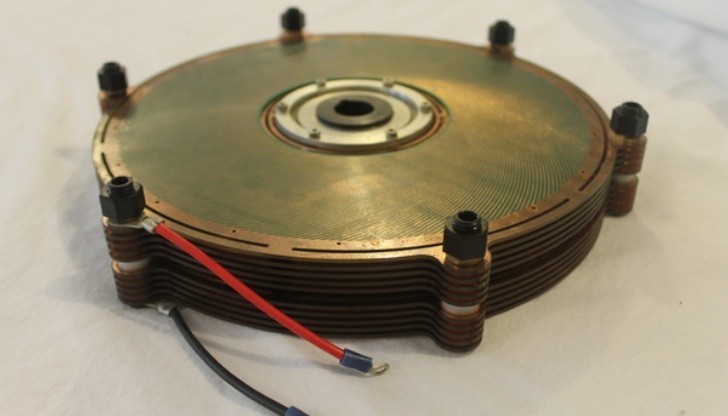Electric motors are almost everywhere; they’re in your refrigerator, blender, washing machine, the hair dryer, vacuum cleaner, electric toothbrush, toys, garage door opener and there is one even in your smartphone that is used to create vibrations when you put the device on “Silent”.
They come in every sizes and most people take electric motors for granted, but after they started to power our cars and scientists said EVs are the key for future green transportation, these rotating wonders started to regain attention for some possible enhancements.
A startup business commercializing technology from the College of Engineering at UW-Madison, going by the name of C-Motive Technologies, came up with another type of electric motor that uses electrostatic forces instead of the classic magnetism, which is said to work better and be more cost effective.
What could you enhance in a device that works by magnetism? Isn’t it simple and efficient enough in converting electricity to a rotary force?
Yes, magnetism is easier to exploit due to the properties of natural occurring materials and simple engineering, but the new advances in materials, mechanical engineering and manufacturing can turn electrostatic motors into the real starts.
The principle relies on electronics that precisely control a high-voltage, high-frequency electric field and fluid mechanics to keep surfaces close without touching.
In its prototype form, the motor is nested stationary and rotating plates are held very close to each other by an air-cushion. An electric voltage run through the fixed plates creates an electrostatic field that attracts the rotating plates in a way that makes them spin.
“A charge builds up on the surfaces of the plates, and if you can manipulate the charge, you can convert electricity into rotary motion or transfer electric power from one set of plates to the other,” said project co-founder Dan Ludois.
“Rather than magnetism, we are using the force that hold your clothes together when you take them out of the drier — electrostatic force. This technique can power anything that needs to move, and that you don’t want to touch while it’s moving,” he added.
In other words, the new motor doesn’t need magnets, since it’s not based on electromagnetism and can also ditch the expensive copper windings to use aluminum, which is cheaper. And since the motor isn’t using brushes or bearings for the rotating bit, the friction is almost negligible, thus minimizing energy loses and increasing efficiency.
The new motor, however, is not that new at all. Back in the 18th and 19th centuries, Benjamin Franklin and others shown the principle and actually built motors using electrostatic forces. However, none of them was practical enough to be used.
This type of technology might first find its way into the wind turbine generators, for which C-Motive Technologies already received a Small Business Innovation Research grant for development and research. If it works, the technology will find its way in every other electric appliance and even cars.
A startup business commercializing technology from the College of Engineering at UW-Madison, going by the name of C-Motive Technologies, came up with another type of electric motor that uses electrostatic forces instead of the classic magnetism, which is said to work better and be more cost effective.
What could you enhance in a device that works by magnetism? Isn’t it simple and efficient enough in converting electricity to a rotary force?
Yes, magnetism is easier to exploit due to the properties of natural occurring materials and simple engineering, but the new advances in materials, mechanical engineering and manufacturing can turn electrostatic motors into the real starts.
The principle relies on electronics that precisely control a high-voltage, high-frequency electric field and fluid mechanics to keep surfaces close without touching.
In its prototype form, the motor is nested stationary and rotating plates are held very close to each other by an air-cushion. An electric voltage run through the fixed plates creates an electrostatic field that attracts the rotating plates in a way that makes them spin.
“A charge builds up on the surfaces of the plates, and if you can manipulate the charge, you can convert electricity into rotary motion or transfer electric power from one set of plates to the other,” said project co-founder Dan Ludois.
“Rather than magnetism, we are using the force that hold your clothes together when you take them out of the drier — electrostatic force. This technique can power anything that needs to move, and that you don’t want to touch while it’s moving,” he added.
In other words, the new motor doesn’t need magnets, since it’s not based on electromagnetism and can also ditch the expensive copper windings to use aluminum, which is cheaper. And since the motor isn’t using brushes or bearings for the rotating bit, the friction is almost negligible, thus minimizing energy loses and increasing efficiency.
The new motor, however, is not that new at all. Back in the 18th and 19th centuries, Benjamin Franklin and others shown the principle and actually built motors using electrostatic forces. However, none of them was practical enough to be used.
This type of technology might first find its way into the wind turbine generators, for which C-Motive Technologies already received a Small Business Innovation Research grant for development and research. If it works, the technology will find its way in every other electric appliance and even cars.
